Tired of using toxic cleaning products or natural cleaners that don’t quite get the job done? Here’s how to make the best DIY toilet bowl cleaner to leave toilets fresh and spotless.
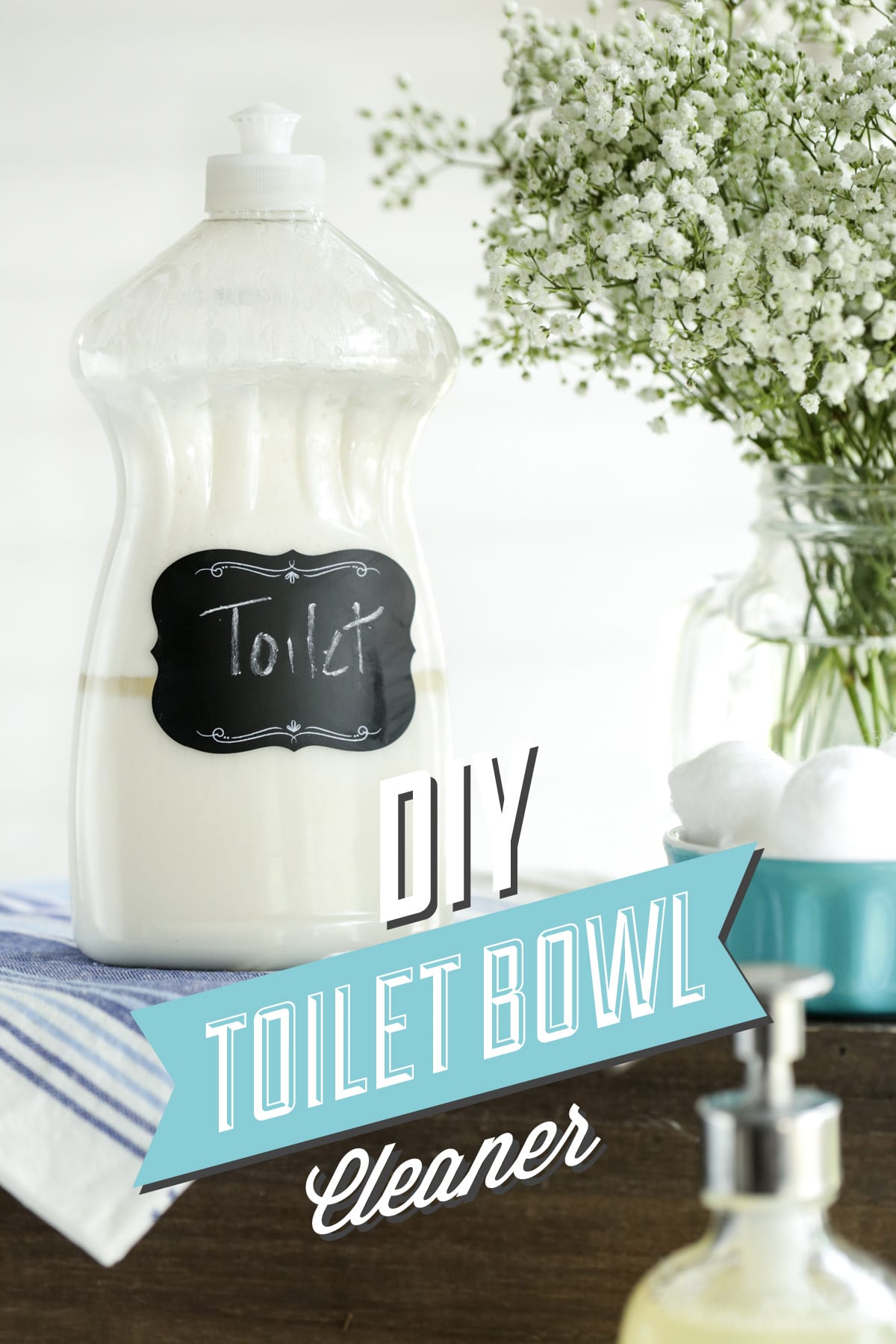
Want to Save This Article?
Enter your email & I’ll send it straight to your inbox. And you’ll get new recipes & tips each week.
In this blog, I’m outlining the exact steps to make the best homemade liquid toilet bowl cleaner and how to use it.
Key Takeaways
- To make this liquid toilet cleaner, you’ll need simple ingredients and no harsh chemicals: castile soap, baking soda, and water.
- Use this cleaner instead of store-bought toilet bowl cleaner. Yep, goodbye harsh chemicals.
- Use this recipe to clean toilets (removing dirt and grime), remove hard water and most other toilet bowl stains, and dissolve odors.
- You can store this cleaner for up to 1 month. So make a bottle today and use it each week to naturally clean your toilets.
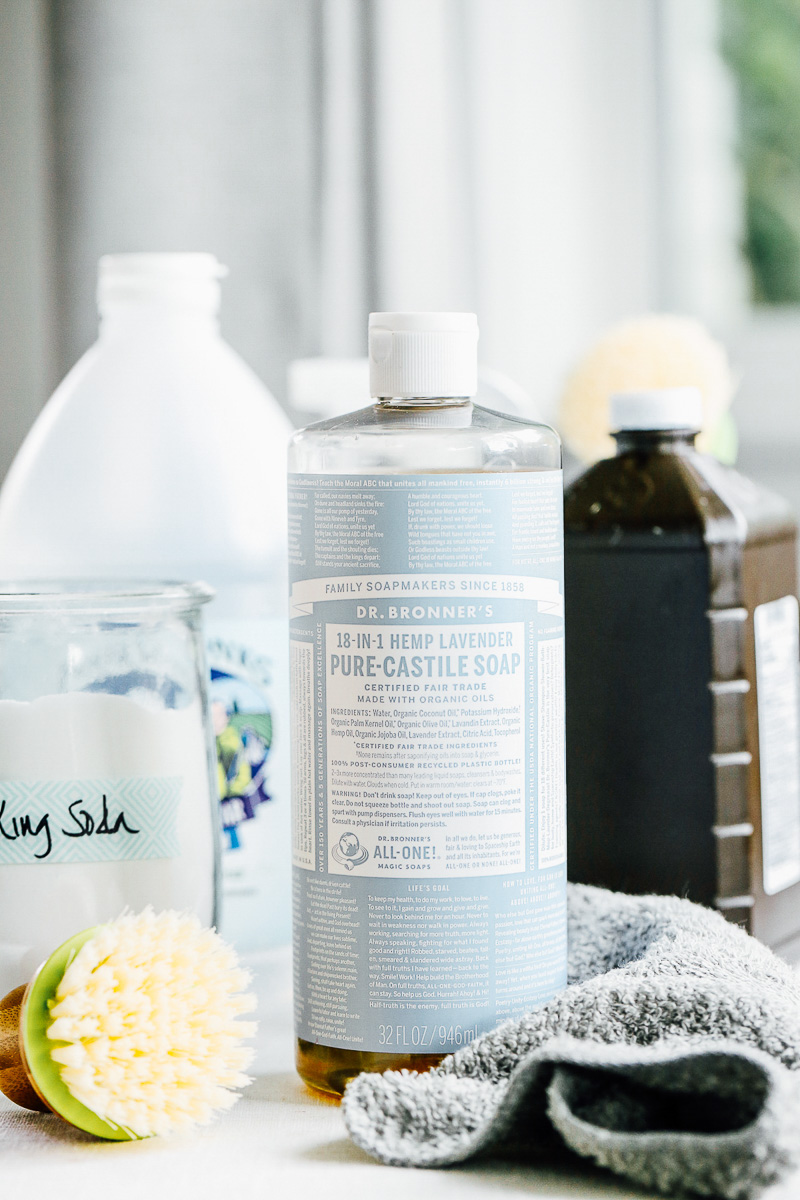
Before You Get Started: What You’ll Need
This easy recipe is a result of a lot of trial and error, and lessons in chemistry, such as: vinegar and baking soda cancel each other out (a chemical reaction to avoid when making natural recipes).
Ingredients
- 1 cup distilled water – The safest option to use when making your own cleaning products. Distilled water removes containments, which may cause bacteria to grow quickly in DIY cleaners. You’ll find this water option at most grocery stores. If you plan to use this cleaner quickly (within a few days), filtered water is fine.
- 1/2 cup baking soda also known as: sodium bicarbonate – This is the key ingredient for lifting stains and deodorizing the toilet. Also used in over 19 different cleaning hacks.
- 1/2 cup liquid castile soap – An ancient, concentrated vegetable-based soap. I use castile soap for everything from homemade laundry detergent to hand soap and face wash. This is the key ingredient for removing dirt and germs from the toilet bowl. For a tougher option, use Sal Suds, castile soap’s big brother. How to clean your home with castile soap.
- (optional) 15-30 drops of your favorite essential oil, such as: lavender essential oil or grapefruit, tea tree oil, lemon, or orange – Many essential oils are known for their natural cleaning power (antibacterial and antiseptic), and their lovely natural scent. The essential oils also add an amazing fresh scent to the toilet bowl. How to use essential oils for cleaning.
Equipment
- 1 squirt bottle – such an empty and clean dish soap bottle, ketchup bottle, or purchase a squirt bottle from the store) for storing the toilet bowl cleaner.
- 1 small funnel (optional) – for pouring the ingredients into the squirt bottle.
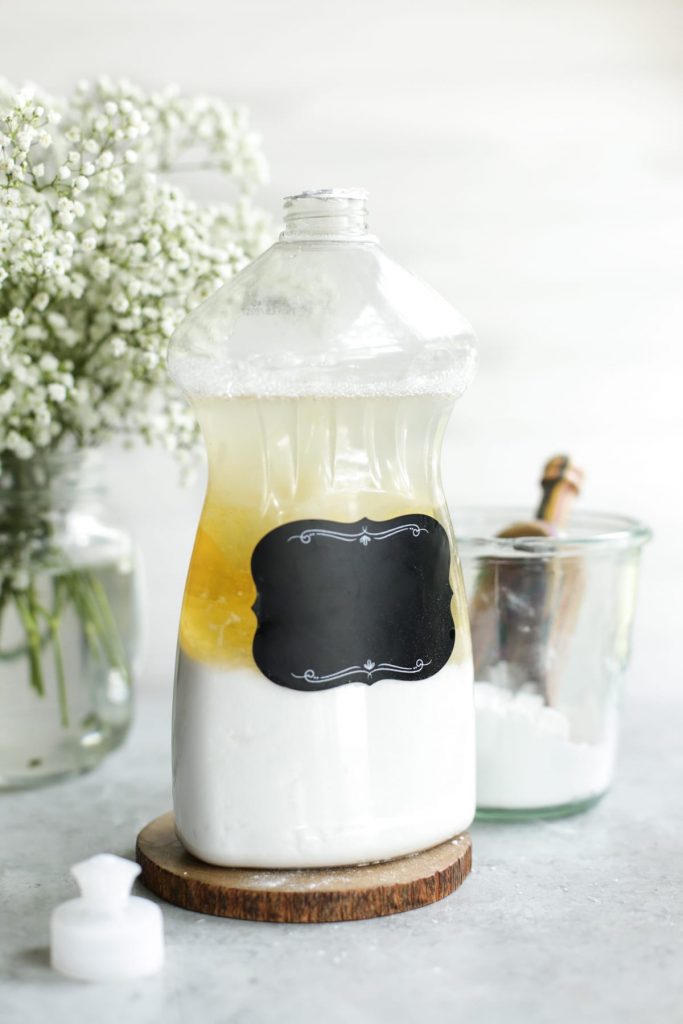
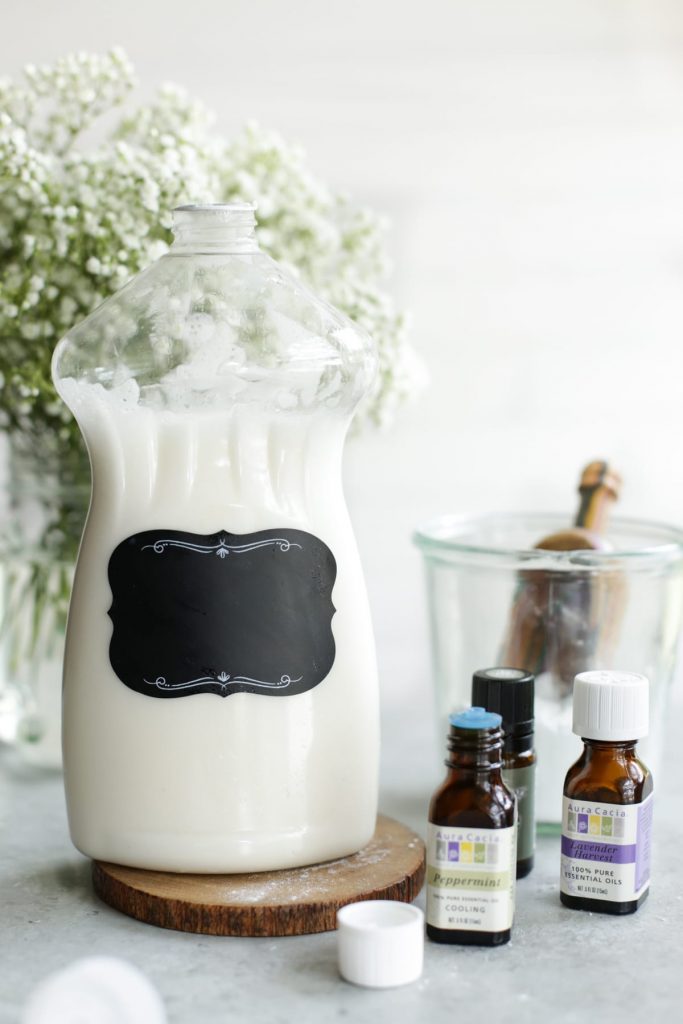
How to Make & Use DIY Toilet Bowl Cleaner: Step-by-Step Guide
Step 1: Add Ingredients a Squirt Bottle
- Using a small funnel (optional, but very helpful), add the liquid ingredients to the squirt bottle: water and castile soap.
- Finally, add the baking soda.
Step 2: Shake to Combine
- Place the top on the bottle (make sure the squirt top is closed). Shake the bottle vigorously until the ingredients are well combined.
- Store the cleaner in your cleaning caddy.
- Use to clean toilet bowls as needed.
Step 3: Clean the Toilet
- Squirt the cleaner inside the toilet bowl, hitting the sides of the bowl with the solution.
- Use a toilet brush to scrub the toilet bowl.
- Flush the toilet. The toilet should now be clean, stain-free, and deodorized.
If you’d like to disinfect the toilet bowl as well: After cleaning the toilet bowl with this solution, spray hydrogen peroxide or vinegar into the toilet bowl (to do this, attach a spray nozzle on a bottle of hydrogen peroxide or add 100% white vinegar to a spray bottle). Allow the hydrogen peroxide or vinegar to rest for a few minutes inside the toilet bowl, then scrub again and flush.
Disinfecting vs. Cleaning
Disinfecting is an activity that’s (generally) done after cleaning (usually done with soap/water to remove dirt, dust, etc.). “Disinfecting…refers to killing a high percentage of the germs on a surface or rendering them incapable of reproducing.” (source)
In the case of the toilet, and natural cleaning, first use the homemade toilet bowl cleaner, scrub, and flush. Then use vinegar or hydrogen peroxide to disinfect (optional). This is a good idea for deep cleanings if the toilet is particularly dirty, sickness has occurred in the home, etc.
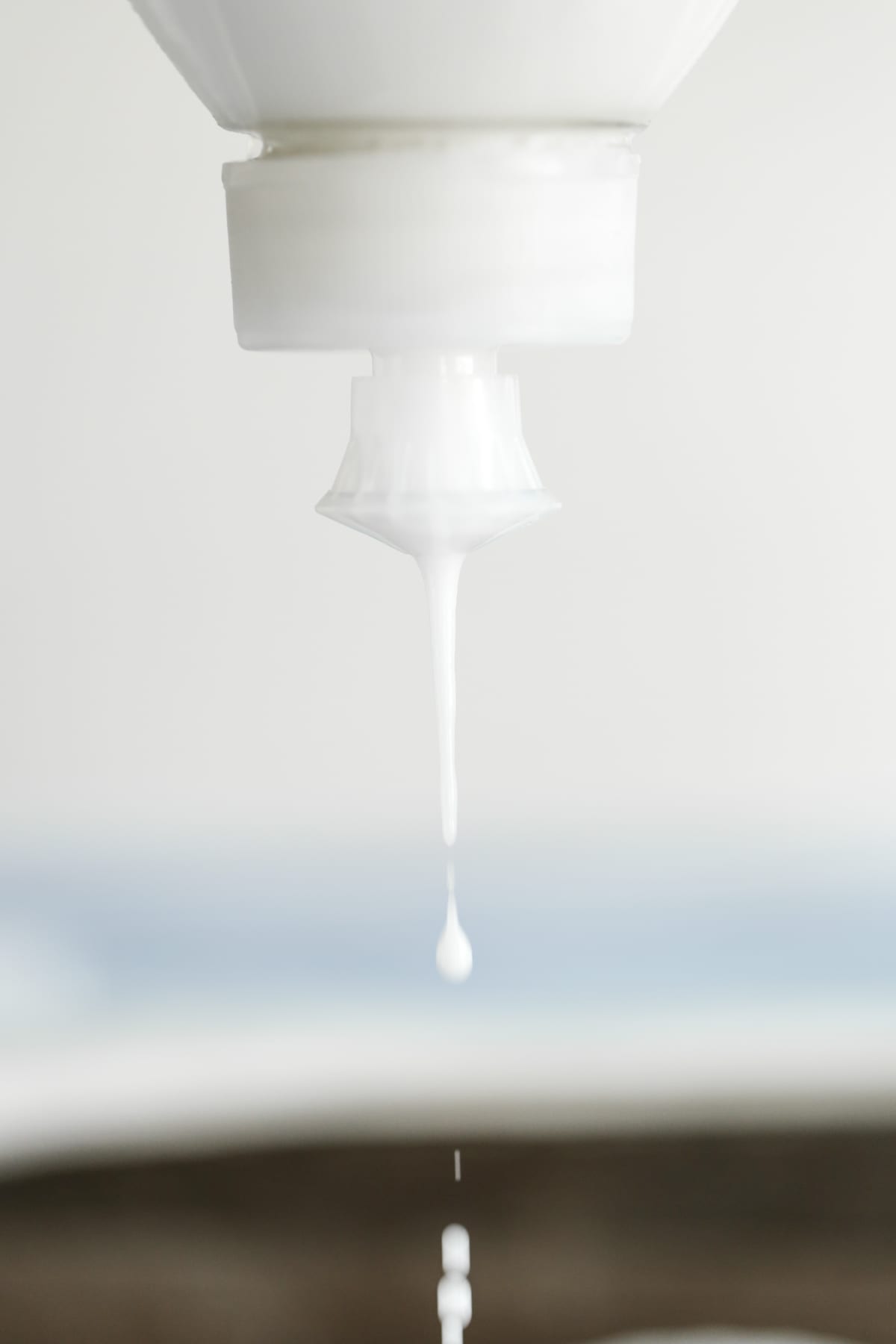
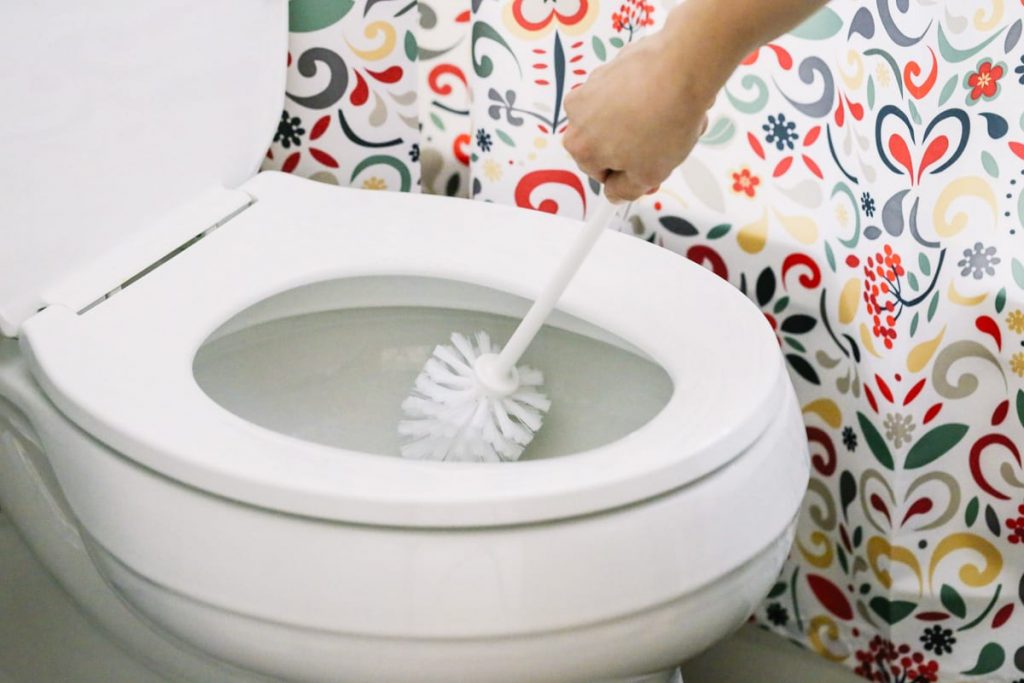

What to Avoid Doing
- Don’t add vinegar to this recipe. I know many people like to use vinegar for cleaning (including myself), but you should never mix baking soda and castile soap with vinegar (here’s why). You CAN use vinegar in the toilet bowl AFTER cleaning it with this cleaner to disinfect it.
- Don’t add hydrogen peroxide to this recipe. You CAN use hydrogen peroxide as a spray to disinfect the toilet bowl AFTER cleaning with this recipe. But, adding hydrogen peroxide directly to the recipe will result in an explosion of the bottle.
- For safety reasons, don’t use tap water to make this recipe. It’s always best to use distilled water for long-term storage (a few days or weeks).
- Skip the essential oil if have cats or small children in your home. While they provide a lovely scent, they can be dangerous for some animals and children. Do your research first.
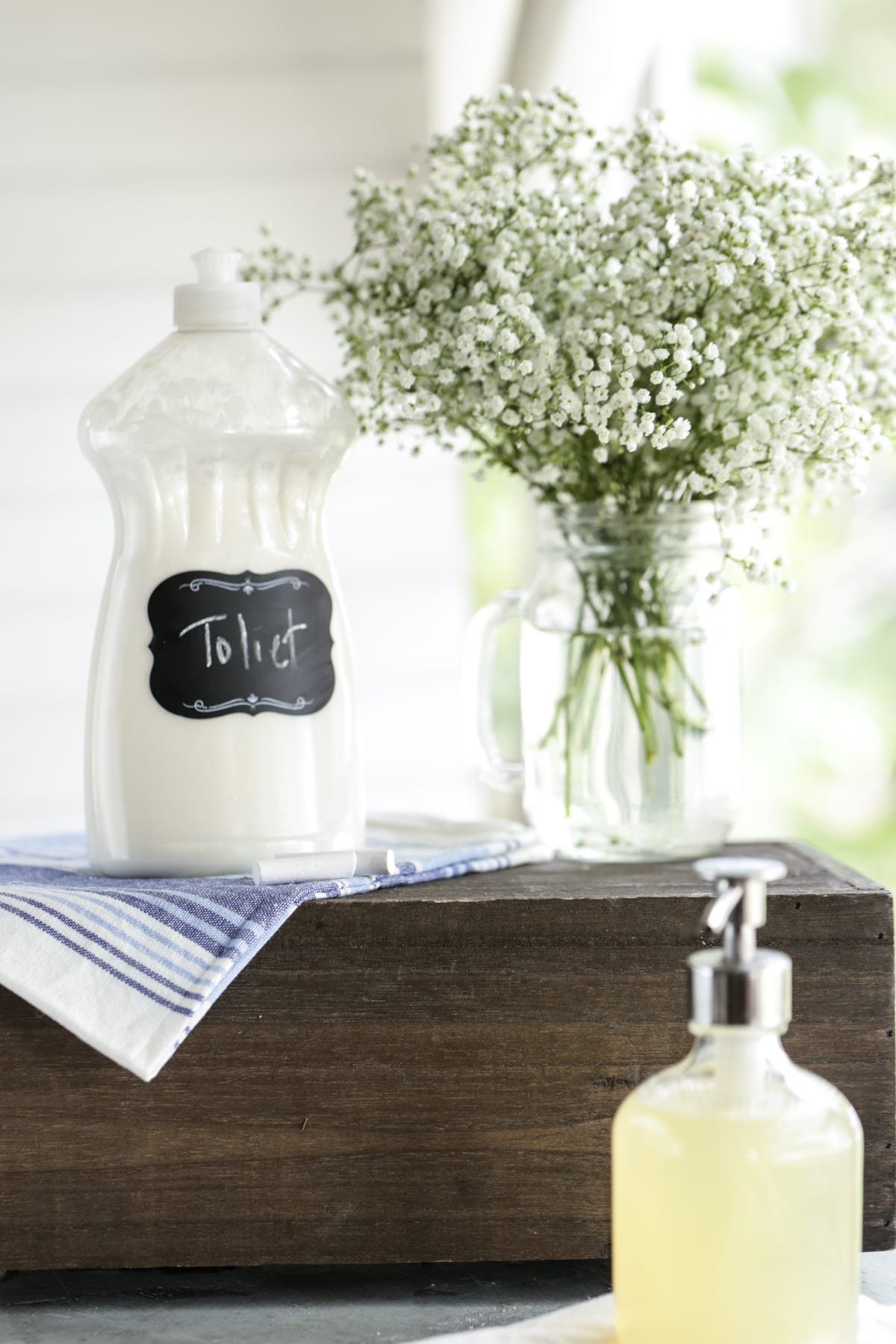
How Long Will This Cleaner Last?
- Store the cleaner in your cleaning caddy, just as you would a commercial toilet bowl cleaner.
- Store for up to 1 month.
Conclusion
Use this natural toilet bowl cleaner just as you would conventional toilet bowl cleaners.
The ingredients used to make this recipe are purposely selected to remove dirt and grime, lift stains and freshen toilet bowls. Give it a try and tell me what you think!
If you’re looking to make a powdered toilet bowl cleaner, check out this recipe.
FAQs
- Can I use baking powder instead of baking soda? No, these are two very different products. You need baking soda, a standard kitchen staple, and a household cleaner for this recipe.
- How long will this recipe last? I recommend storage for up to 1 month due to the water. Granted, you’re not consuming the product so that you could go a bit longer without issue.
- Could you replace the water with hydrogen peroxide or vinegar to help sanitize and bleach out stains? Hydrogen peroxide will cause an explosive reaction if mixed with baking soda, and vinegar doesn’t interact well with castile soap or baking soda. Stick with water. After cleaning, spritz the toilet directly with vinegar or hydrogen peroxide for sanitizing.
- I can’t find Castile soap; what else can I use? Any dish soap, from Dawn to natural dish soap (like Seventh Generation), will work perfectly as a substitute.
- Can I use a small spray bottle instead of a squirt bottle? No, it will be very hard to spray this solution due to the baking soda. You’ll find a squirt bottle (used for condiments) in most stores (even the Dollar Store) in the kitchen/cooking aisle, or reuse an old dish soap or ketchup bottle.
Top Favorite Cleaners for the Bathroom
- Bathroom Cleaner Spray: An all purpose cleaner for all surfaces, including the bathroom toilet seat.
- Tub & Sink Scrub: For tiles, sinks, and tub/shower surfaces.
- Glass/Mirror Cleaner: For shower doors and bathroom mirrors.
- Liquid Laundry Soap: Wash your bathroom towels in this simple detergent.
Learn how to make natural cleaners for your home
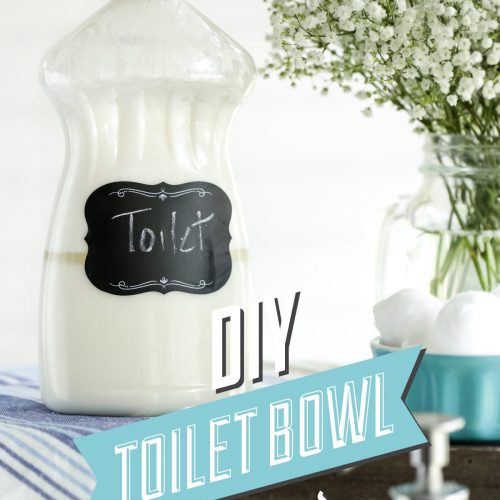
DIY Toilet Bowl Cleaner Recipe
Equipment
- 1 squirt bottle (such an empty and clean dish soap bottle, ketchup bottle, or purchase a squirt bottle from the store) for storing the toilet bowl cleaner
- 1 small funnel (optional) for pouring the ingredients into the bottle
Ingredients
- 1 cup distilled water best for safety purposes
- 1/2 cup baking soda
- 1/2 cup liquid castile soap (any scent or unscented)
- 15-30 drops favorite essential oil of choice such as: lavender, grapefruit, tea tree, lemon, or orange (optional)
Instructions
- Using a small funnel (optional, but very helpful), add the liquid ingredients to the squirt bottle: water and castile soap. Finally, add the baking soda.
- Place the top on the bottle (make sure the squirt top is closed). Shake the bottle vigorously until the ingredients are well combined. Store the cleaner in your cleaning caddy. Use to clean toilet bowls as needed.
- Store the cleaner in your cleaning caddy, just as you would a commercial toilet bowl cleaner. Store for up to 1 month.
How to Use:
- Squirt the cleaner inside the toilet bowl, hitting the sides of the bowl with the solution. Use a toilet brush to scrub the toilet bowl. Flush the toilet. The toilet should now be clean, stain-free, and deodorized.
- (Optional) If you'd like to disinfect the toilet bowl as well, here's a great way to do that: After cleaning the toilet bowl with this solution, spray hydrogen peroxide or vinegar into the toilet bowl (to do this, attach a spray nozzle on a bottle of hydrogen peroxide or add 100% white vinegar to a spray bottle). Allow the hydrogen peroxide or vinegar to rest for a few minutes inside the toilet bowl, then scrub again and flush.

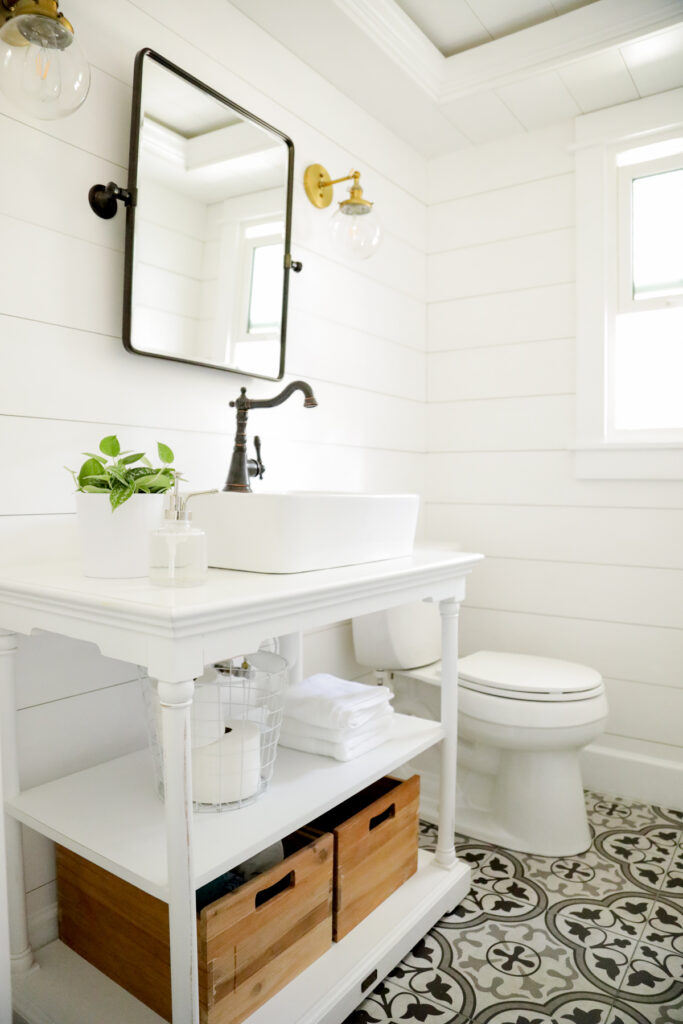
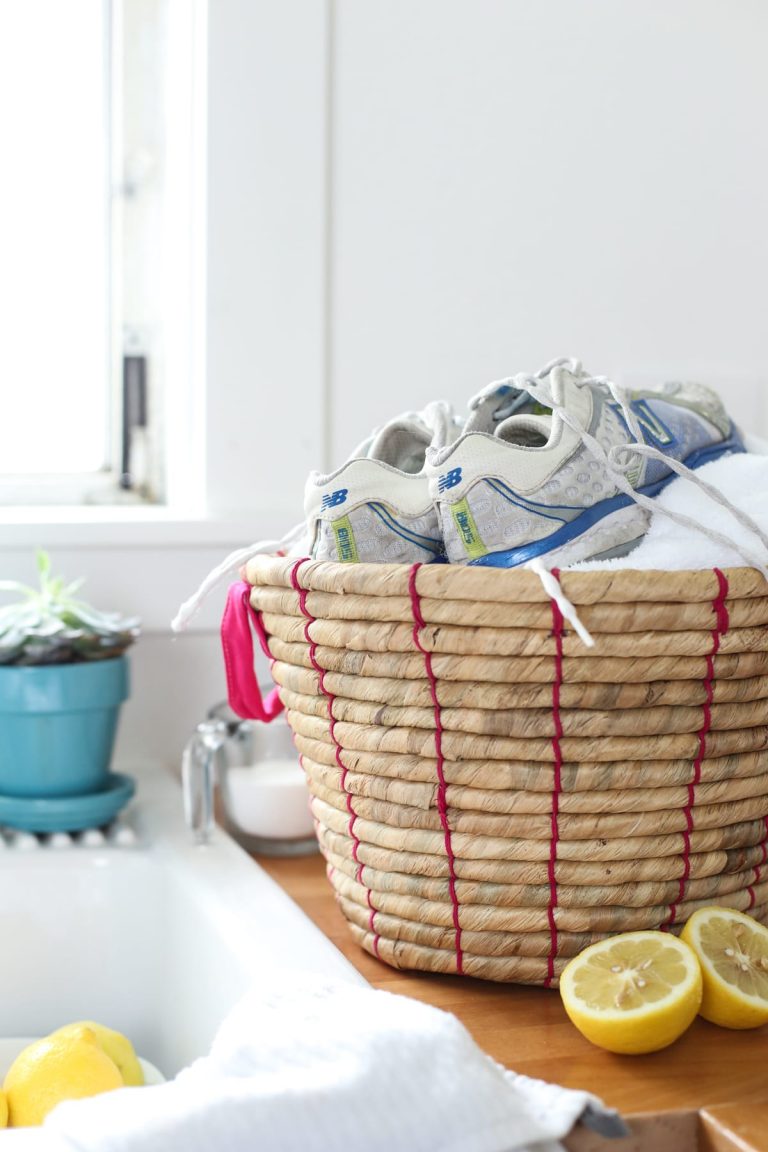
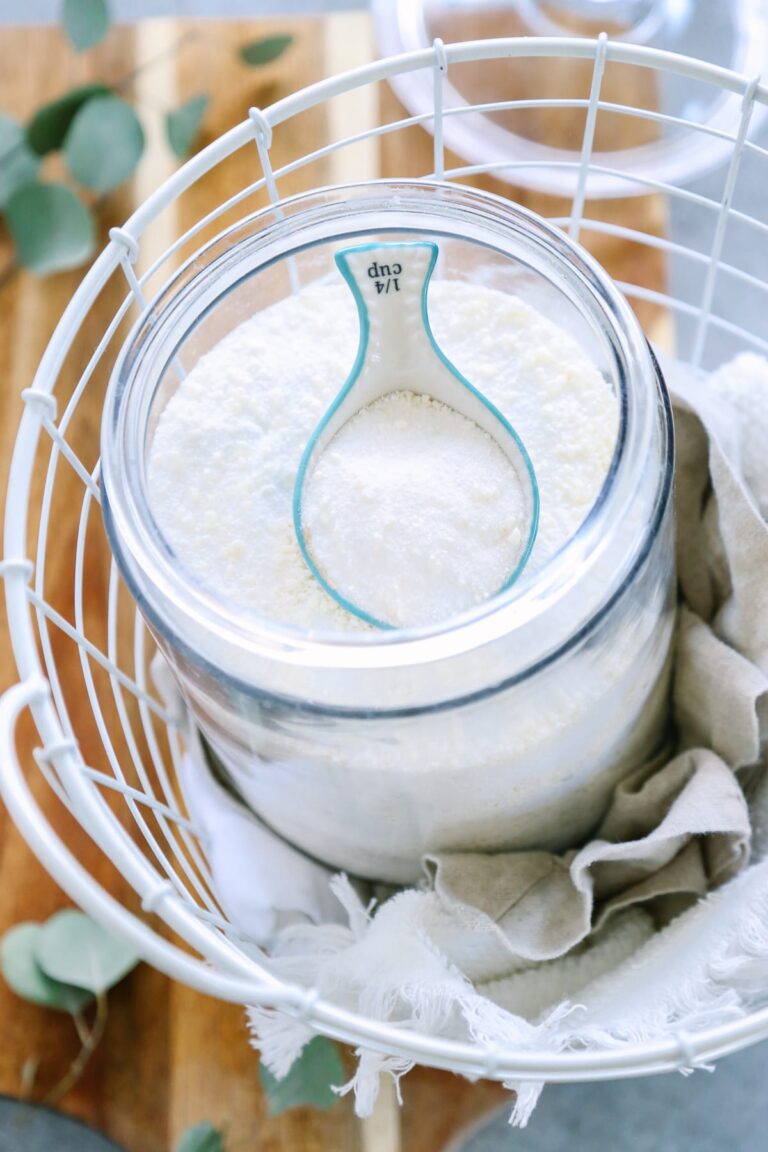
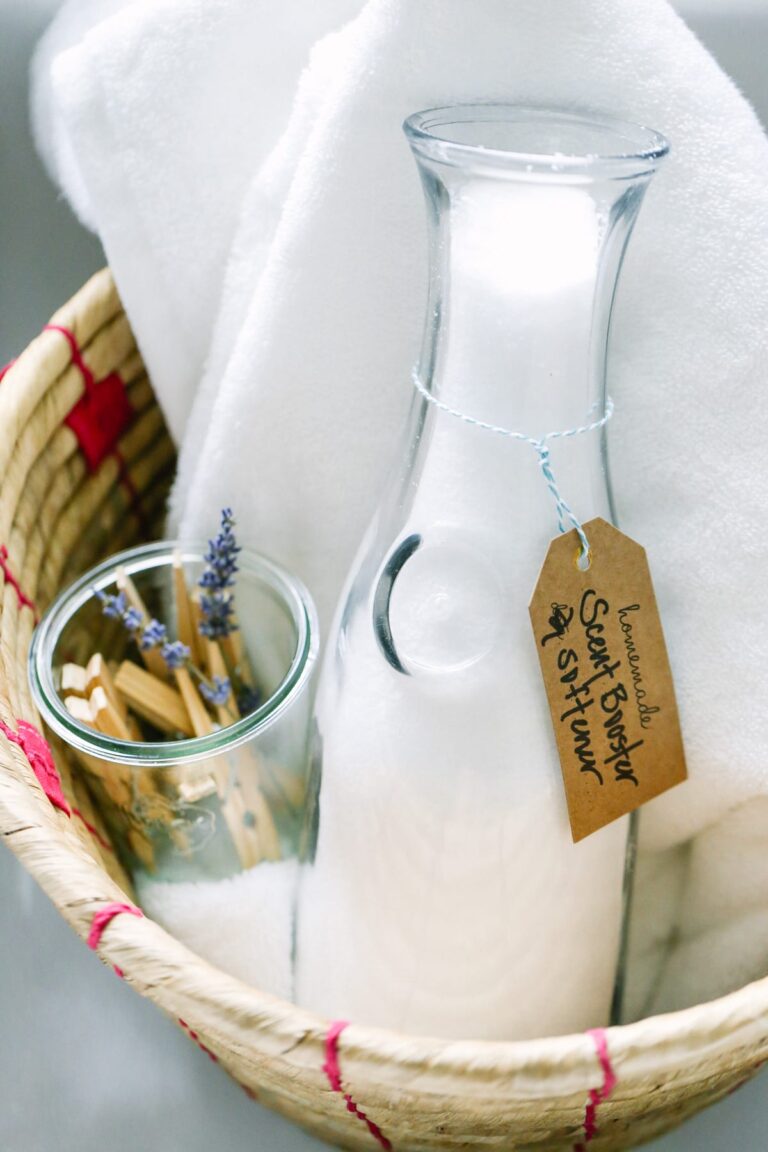
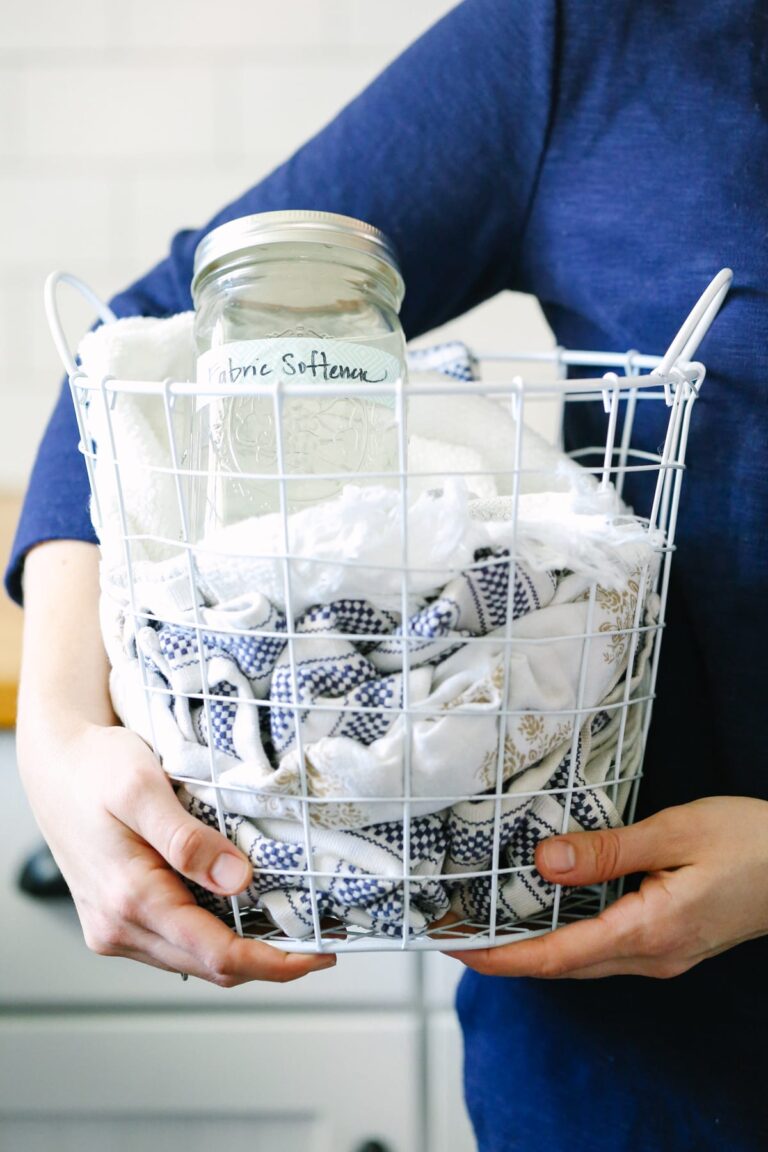
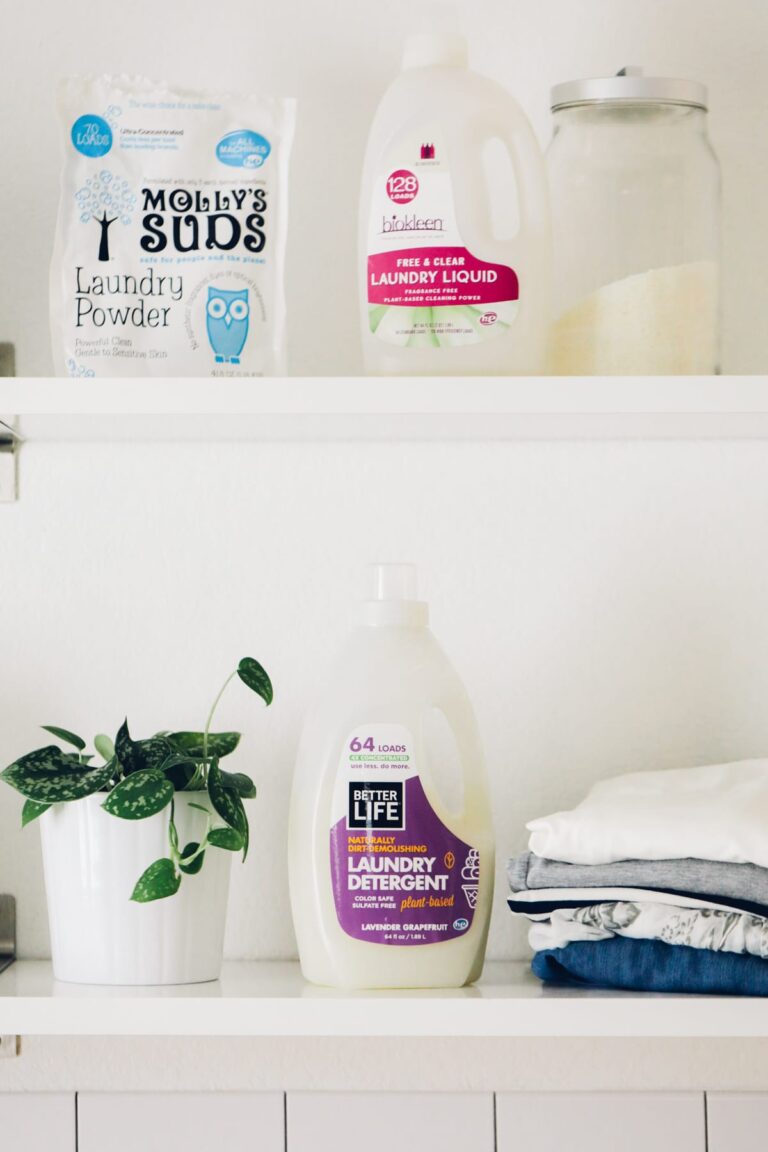
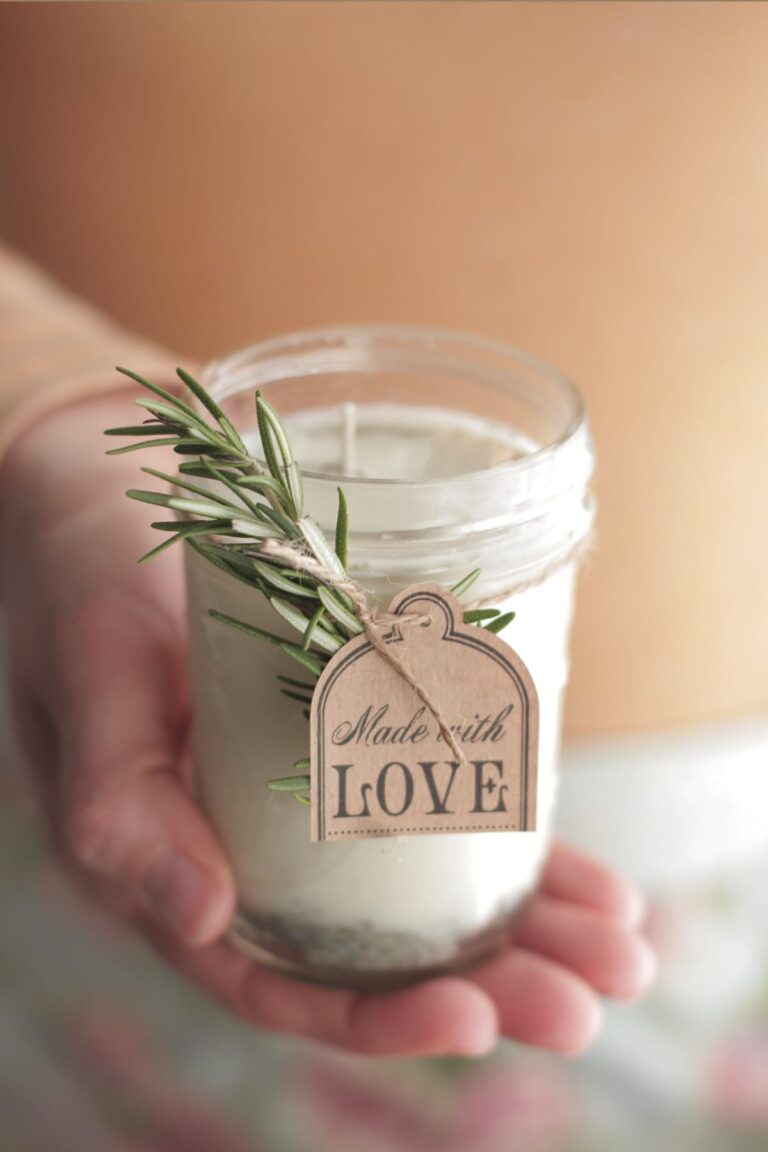
Since Sals Suds is SO concentrated, how much do you use when using that instead of basic Castile soap?
Hey Kim, I would cut it in 1/2 or even 1/4 of the castile amount. You could always add more if needed.
I’ve been using your recipe for several months and really love it. I had been using those Clorox disposable ones until they now fall apart when you use them. I really believe the toilet bowl is whiter than when I used the clorox ones. Thanks so much for sharing!
That’s awesome, Sandy!
you don’t say how much hydrogen peroxide to use.
Hey Milica, It’s found under the recipe in the notes:
Originally this recipe called for 1/4 cup hydrogen peroxide in the mix. Hydrogen peroxide and baking soda, when combined, needs to be de-gased regularly to avoid a gas buildup (and an “explosion” of the ingredients when a bottle is opened). To avoid this possible issue, I’ve adjusted the recipe. Instead of adding the hydrogen peroxide (a great disinfectant) to the cleaner bottle, I recommend squirting the cleaner in the toilet bowl, scrubbing the toilet, and then spraying straight hydrogen peroxide (straight from the bottle with a spray nozzle attached). Allow the hydrogen peroxide to sit for a few minutes before flushing. You can also use vinegar in place of the hydrogen peroxide.
This method allows the toilet cleaner can sit for days and days without needing to be opened, and you’ll still get the disinfecting qualities of hydrogen peroxide.
If use the vinegar instead of hp . can I mix it in the bottle with the others? Also, would it be 1/4 cup vinegar?
You can’t mix vinegar with baking soda, so it would be best to keep it separate.
LS Team
I’ve been using this cleaner for a while. Overall I’ve been happy with it, but in recent months, I’ve noticed a mildew of some sort growing in my toilet bowls. (EWWWW gross… I knew.) I use everything in the solution except for the 25 drops of a specific oil. I found another recipe that used a mix of cleaning oils, so I had opted for that mixture of orange, lemon, tea tree, lavender, and eucalyptus. The last time I cleaned I finally broke down and sprayed my toilet bowls with some bathroom cleaner with bleach that we keep on hand for little kids pooping in tubs… It got rid of all of the mildew that was growing, and I was wondering if there is an essential oil that is particularly good for killing fungus. I don’t want to have to spray this bathroom cleaner all that much since I’ve mostly phased on harsh chemical cleaners in my household. Suggestions?
Hi Elizabeth,
I would use vinegar. Straight vinegar sprayed on the area. Another idea is to use baking soda sprinkled directly in the area and then scrub with a toilet brush. Both should take care of the issue.
LS Team
Hello – I am looking into “DIY cleaning products” in order to save the environment (and save money!). I am interested in your loo cleaner recipe. I am currently using a natural powder cleaner I would be happy to carry on with but it’s £13 which is very expensive! I’d be interested in whether you could recreate something similar.
Also what would you recommend for cleaning a glass shower screen? I’ve been using a mixture of – you guessed it, baking powder and vinegar… Thank you!
Elly,
You can spray your toilet with vinegar and sprinkle bicarbonate of soda on top of it and then use a toilet brush to clean. I would just recommend diluted vinegar for you glass shower.
Let me know if this helps!
LS Team
Hi, I made the bathroom toilet cleaner. But I found it difficult for the baking soda to dissolve in the squirt bottle. What do you recommend? Should the water be room temp or hot when making the solution?
Also how long does it keep? Hopefully a month as I have only one bathroom to clean weekly.
Thanks, JA
P.s. everything is sparkly white and smells great!
Hey Julie Ann, Warm water is best. It won’t fully dissolve in the water, but should create a “squirtable” solution for cleaning. It will keep for about a month, if using distilled water.
Hi thanks for your post! I tried it out and mine is about the consistency of cottage cheese. Is that what yours is like?
Hey Amber, You can water it down a bit more if needs.
Just curious, does this work for many of your readers? I’ve just scrolled through the comments and I don’t see too many people chiming in that this worked, or didn’t work, for them. Am I missing something?
Hey Raffi, I only share recipes that I’ve personally used and work for me.
Love the toilet bowl cleaner. Thank you for the recipe.
> vinegar and baking soda cancel each other out and result in basically a water solution
THANK YOU! So many home-made cleaning recipes have this combo thinking the foam/bubbles indicate that it’s doing something. Can’t wait to try this recipe.
Hey there!
Just one small question. Can you use this wonderful concoction to clean and sanitize stainless steel kitchen sink?
Thank you.
Lucie
Hey Lucie, I would test it out in a small area first.
What strength of peroxide do you recommend? 3.5% or 35%?
3.5%, the kind you’ll find in most drug stores.
LS Team
Hello!
If you use hydrogen peroxyde to disinfect, do you think it could be replaced by alcohol? I have a bottle around and it shouldn’t explode, right?
I’m completely new to DIY and I must admit it feels quite intimidating 😉
Hi! I’m going to attempt this.
After scrubbing the toilet bowl cleaner in toilet do you flush, then spray OR spray over the cleaner?
Thanks
Hey Belinda, Yes, correct. I scrub, flush. Then spray.
I tried this in a spray bottle. I guess the baking soda has clogged the stem. Ive tried taking everything apart and rinsing multiple times, still cannot get it to work. (Bottle was brand new). This will need to be a job for a squirt bottle. My solution will sit until I have an empty squirt bottle. Awesome recipe though! I added a couple drops of sal suds to the recipe, can’t wait to use it!
Hey Em, Thank you for sharing your experience. Yes, I agree. This is a solution for a squirt bottle versus a spray bottle.
I see that castile soap comes in a variety of scents, have you tried any of them with the scents already added. I was wondering if I could skip the step of adding in the essential oils if I went with a scented castile soap? thanks so much!
Hey Stacey, You definitely could for scent. My favorite is orange.
Hi Kristin. I’m new to making my own cleaners so was looking up the ingredients and their other uses, and have a query on Hydrogen Peroxide. My reading suggests it comes in concentrated solution or 3% solution. Which do you use? i.e. do you use the diluted solution?
Hey Carol, Yes, that’s correct. I use 3% and that’s what I recommend for cleaning products. The latter can only be found in special stores.
Can this be used immediately? How many cleanings does make?
Hey Wendy, Yes, it can be used ASAP. It will last about a month, depending on how much is used.
I can’t believe I don’t see this question…but Where did you get this squirt bottle? Besides buying a dawn container and trashing the dawn & rinsing it out! Thanks!
Hey Stephanie, This bottle was a “green” dish soap. I had the bottle from using the dish soap and washed it out for this. I can’t remember the brand right now–it was from a local health food store.
That seems good,I’ll try it. Thanks for sharing. I also wash men’s shampoo empty bottles – which has stronger good smell- and put them in a spray, and then spray toilet seats for daily cleaning and it works well. I deep clean them once a week.